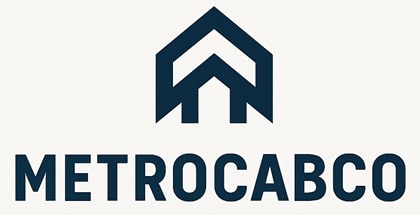In 2025, SEO will rely on a strategic combination of high-quality human content and advanced machine signals. Human content will address user intent and foster engagement, while machine signals will assess relevance and authority. This partnership enhances user experience, ensuring content resonates with audiences. Organizations prioritizing these elements will be better positioned to thrive in a competitive landscape. Exploring these dynamics further reveals valuable strategies for achieving effective SEO outcomes.
Key Takeaways
- SEO in 2025 will prioritize quality human content that resonates with user intent and emotions for better engagement.
- Machine signals will enhance search algorithms, focusing on relevance, authority, and user experience metrics for content ranking.
- Personalization will be key, tailoring content to individual user preferences based on predictive analytics and machine learning insights.
- Balancing creativity and data is essential, as storytelling combined with data-driven insights will enhance brand identity and SEO performance.
- Organizations excelling in intuitive navigation and responsive design will gain a competitive edge in the digital landscape.
The Evolution of SEO: A Historical Perspective
The landscape of search engine optimization (SEO) has undergone significant transformations since its inception. Initially, SEO focused on basic keyword usage and metadata; website owners aimed to manipulate search engine algorithms through tactics like keyword stuffing.
As search engines evolved, they prioritized user experience and content quality, leading to the development of complex algorithms that assessed relevance and authority. The introduction of Google’s Panda and Penguin updates marked a turning point, penalizing sites with low-quality content and spammy backlinks.
Also Read
Over time, mobile optimization and voice search emerged as critical factors, reflecting users’ changing behaviors.
Mobile optimization and voice search have become essential elements of SEO, mirroring the evolving habits of users today.
Today, SEO encompasses a blend of technical strategies and user-centered design, continually adapting to new technologies and consumer expectations while emphasizing the need for genuine, valuable content.
Understanding Human Content: The Heart of SEO
Content serves as the foundation of effective SEO, resonating deeply with both users and search engines. Understanding human content is essential for driving engagement and building trust.
Quality human content encompasses several key elements:
- Relevance: Content must align with user intent and address specific needs or questions.
- Clarity: Clear, concise language enhances comprehension, making information accessible to a broader audience.
- Emotion: Evoking emotions can create a connection with readers, encouraging sharing and interaction.
The Role of Machine Signals in Search Algorithms
In the evolving landscape of SEO, machine signals play a vital role in shaping search algorithms.
These algorithmic ranking factors, driven by data-driven insights, help search engines assess the relevance and authority of content.
Understanding how these signals influence rankings is essential for optimizing digital strategies in 2025 and beyond.
Algorithmic Ranking Factors
Understanding algorithmic ranking factors is essential for maneuvering the evolving landscape of search engine optimization. These factors are critical in determining how content ranks on search engine results pages (SERPs). They incorporate both human content quality and machine signals, influencing visibility and traffic.
Key algorithmic ranking factors include:
- Relevance: How well the content matches user intent and query terms.
- Authority: The credibility of the source, often measured through backlinks and domain strength.
- User Experience: Metrics such as page load speed, mobile-friendliness, and overall usability that impact user engagement.
These elements are increasingly crucial as search algorithms become more sophisticated, emphasizing the need for a balanced approach to SEO strategies.
Data-Driven Insights
Machine signals play a pivotal role in shaping how search engines interpret and rank content. These signals, derived from user interactions and behavioral data, provide valuable insights into content effectiveness and relevance.
Metrics such as click-through rates, dwell time, and bounce rates inform algorithms, helping them identify high-quality content that meets user intent. Additionally, machine learning algorithms analyze vast datasets to uncover patterns and trends, enhancing the ability to predict which content will perform well.
As search engines increasingly prioritize user experience, data-driven insights become essential for optimizing content strategies. By leveraging these insights, marketers can create more targeted, engaging content that aligns with both human needs and machine evaluations, ultimately improving search visibility and performance.
The Importance of User Experience in 2025
How essential will user experience be in 2025 for maintaining a competitive edge in the digital landscape? As technology evolves, businesses will need to prioritize user experience to attract and retain customers.
A seamless and engaging experience will become a significant differentiator. Key factors influencing user experience include:
- Intuitive Navigation: Users expect easy access to information, making clear and logical navigation critical.
- Responsive Design: With diverse devices in use, ensuring websites adapt flawlessly to varying screen sizes is essential.
- Personalization: Tailoring content and recommendations to individual preferences enhances user satisfaction.
In 2025, organizations that effectively integrate these elements into their digital strategies will likely outperform competitors who neglect the importance of user experience.
Balancing Creativity and Data: Finding the Right Mix
Achieving the ideal balance between creativity and data is essential for businesses in 2025. As digital landscapes evolve, organizations must harness creative storytelling while relying on analytics to guide strategies.
Creativity fuels engagement and brand identity, yet data-driven insights inform decision-making and optimize content performance. This dual approach enables marketers to craft compelling narratives that resonate with audiences, all while ensuring alignment with search engine algorithms and user preferences.
By combining innovative concepts with measurable results, businesses can enhance their online presence and drive conversions.
Ultimately, finding the right mix of creativity and data not only fosters authentic connections with users but also positions brands competitively in an increasingly data-centric environment.
Strategies for Creating Authentic Human Content
In the quest for a balanced approach to content creation, the emphasis on authentic human content has gained momentum.
Marketers are increasingly recognizing the importance of connecting with audiences on a personal level.
Connecting with audiences on a personal level is becoming essential for effective marketing strategies.
Effective strategies for creating such content include:
- Understanding Audience Needs: Conduct thorough research to grasp the interests, pain points, and preferences of the target demographic.
- Storytelling Techniques: Use narratives to engage readers emotionally, making the content relatable and memorable.
- Encouraging User-Generated Content: Foster community engagement by inviting customers to share their experiences, which enhances authenticity and builds trust.
Harnessing Machine Learning for SEO Optimization
In the evolving landscape of SEO, machine learning offers powerful tools for enhancing optimization strategies.
By leveraging algorithmic insights, marketers can craft content that aligns closely with user intent.
Additionally, predictive analytics and automated techniques provide a framework for continuously refining SEO efforts.
Algorithmic Insights for Content
Harnessing machine learning for SEO optimization has become a pivotal strategy for content creators aiming to enhance visibility and engagement. By leveraging algorithmic insights, they can gain valuable perspectives on user behavior and content performance. This approach allows for more effective targeting and personalization.
Key insights include:
- Content Performance Analysis: Utilizing algorithms to assess which topics resonate most with audiences, refining future content strategies.
- User Intent Understanding: Machine learning models can decipher search patterns, helping creators align content with user expectations.
- Competitor Benchmarking: Algorithms can analyze competitor performance, revealing gaps and opportunities for differentiation.
Incorporating these insights empowers content creators to produce more relevant and engaging material, ultimately driving better SEO outcomes.
Predictive Analytics in SEO
How can predictive analytics transform SEO strategies? By leveraging machine learning algorithms, businesses can analyze vast amounts of data to anticipate user behavior and preferences.
This approach enables SEO professionals to identify emerging trends, optimize content accordingly, and predict the effectiveness of various strategies. Predictive analytics can assess historical performance metrics, allowing for informed decisions about keyword selection and content creation.
Additionally, it aids in enhancing user experience by personalizing content delivery based on predicted interests. As a result, organizations can allocate resources more effectively, ensuring that their SEO efforts align with future market demands.
Ultimately, integrating predictive analytics into SEO not only improves visibility but also fosters a deeper understanding of the evolving digital landscape.
Automated Optimization Techniques
The integration of predictive analytics sets the stage for employing automated optimization techniques that leverage machine learning in SEO. These techniques streamline the optimization process, enabling marketers to focus on strategic content creation rather than manual adjustments.
Key automated optimization techniques include:
- Content Optimization: Machine learning algorithms analyze user engagement metrics to suggest improvements for existing content, enhancing relevancy and user experience.
- Keyword Analysis: Automated tools can identify high-performing keywords and predict emerging trends, allowing for timely adjustments to SEO strategies.
- Performance Tracking: Continuous monitoring through machine learning provides real-time insights, facilitating rapid response to changes in search engine algorithms or user behavior.
The Future of Search: Trends to Watch
What innovations are on the horizon for search engines in the coming years?
Emerging trends indicate a significant shift toward personalization and contextual understanding. As artificial intelligence continues to evolve, search engines are expected to leverage advanced algorithms to better interpret user intent and deliver results tailored to individual preferences.
Voice search and conversational interfaces are likely to gain prominence, enhancing user interaction. Additionally, visual search and augmented reality may transform how users find information, making it more immersive.
The integration of local and hyper-local results will further refine search accuracy. As these trends unfold, balancing human-centric content with machine-driven insights will be essential for optimizing search experiences and meeting the evolving demands of users.
Case Studies: Successful Integration of Human and Machine Elements
As search engines evolve, numerous case studies exemplify the successful integration of human elements with machine-driven processes.
These examples showcase how businesses leverage both creativity and technology to enhance their SEO strategies.
Businesses effectively combine creativity and technology to elevate their SEO strategies and drive meaningful results.
- Content Personalization: A leading e-commerce platform utilized AI algorithms to analyze customer behavior, tailoring content recommendations that boosted engagement and conversion rates.
- Voice Search Optimization: A travel agency adopted a human-centered approach to refine their content for voice search, resulting in a 30% increase in organic traffic.
- Data-Driven Storytelling: A health blog combined SEO analytics with compelling narratives, increasing readership by 50% and improving user retention.
These case studies illustrate the synergy between human creativity and machine efficiency in achieving SEO success.
FAQ
How Will Voice Search Impact SEO Strategies in 2025?
Voice search will greatly influence SEO strategies by prioritizing conversational keywords and natural language processing. Marketers will need to optimize for voice queries, focusing on concise answers and local relevance to enhance discoverability and user engagement.
What Are the Best Tools for Measuring User Engagement?
The best tools for measuring user engagement include Google Analytics, Hotjar, and Mixpanel. These platforms provide insights into user behavior, interactions, and preferences, enabling businesses to optimize their content and improve overall user experience effectively.
How Can Small Businesses Compete in the Evolving SEO Landscape?
Small businesses can compete in the evolving SEO landscape by focusing on high-quality content, leveraging local SEO strategies, utilizing social media for engagement, and employing data analytics to understand and adapt to consumer behavior effectively.
What Ethical Considerations Arise With AI in SEO?
As a gardener nurtures diverse plants, ethical considerations in AI-driven SEO involve bias, transparency, and user privacy. Ensuring fairness in algorithms is essential, fostering trust and integrity in digital landscapes while promoting healthy competition among businesses.
How Often Should Content Be Updated for Optimal SEO Performance?
The frequency of content updates for ideal SEO performance varies, typically recommended every few months. Regular updates enhance relevance, improve user engagement, and signal freshness to search engines, ultimately boosting visibility and rankings in search results.
Conclusion
In the evolving landscape of SEO, the seamless dance between human creativity and machine precision paints a vibrant picture of the future. As content creators weave authentic narratives, algorithms hum in harmony, guiding users through a digital tapestry where experience reigns supreme. The fusion of heart and technology not only enhances visibility but enriches engagement, inviting audiences to explore depths of knowledge and connection. In 2025, the search will not just be a quest for information, but a journey of discovery.













